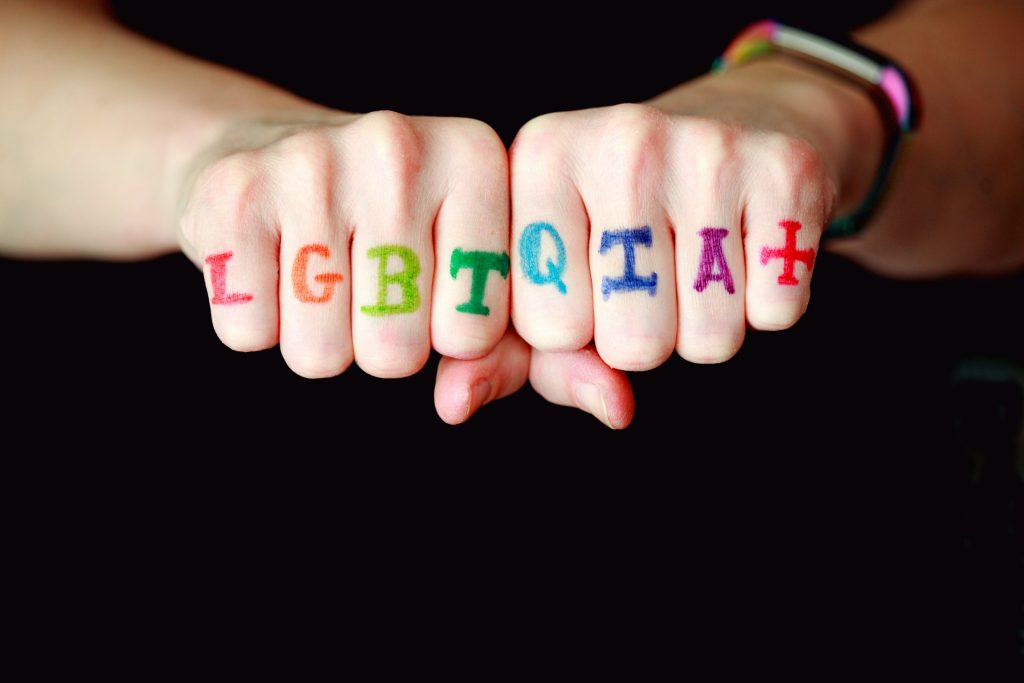Most research on eating disorders (EDs) among adolescents has focused on cisgender individuals, whose gender identity aligns with their birth assignment (Mensinger et al., 2020; Riddle et al., 2024). Limited research has examined non-binary and transgender or gender diverse (TGD) adolescents, resulting in a lack of ED-related knowledge and interventions tailored to these groups.
Researchers increasingly recognise that traditional ED treatments may not address TGD individuals’ unique experiences, such as higher prevalence of comorbid mental health conditions (Becerra-Culqui et al., 2018) and issues with body-positive approaches, which may heighten gender dysphoria among TGD youth, rather than improving body acceptance (Duffy et al., 2016; Hartman-Munick et al., 2021). Without further research, it is inappropriate to assume treatments effective for cisgender patients will be equally effective for TGD individuals.
To address this gap, Riddle et al. (2024) compared ED symptom severity, depression, suicidality, and anxiety between cisgender and TGD adolescents at admission and discharge from higher levels of care (HLOC) ED treatment.

There is limited research on eating disorder treatment outcomes among transgender and gender diverse adolescents, making it difficult to assess whether current treatment approaches (developed in cisgender populations) are appropriate.
Methods
This retrospective cohort study recruited adolescents (<18 years) admitted to a higher levels of care (HLOC) eating disorders (ED) multi-centre in the US between August 2020 and June 2022. All participants met DSM-5 ED criteria, determined by semi-structured interviews with licensed mental health professionals.
The following outcomes were measured at admission and discharge:
- Eating disorders symptoms (EDE-Q)
- Depression severity and suicidality (PHQ-9)
- Anxiety symptoms (GAD-7)
Changes in ED symptoms, depression, suicidality, and anxiety were analysed using paired samples t-tests with Cohen’s d calculations, followed by logistic regressions using odds ratios (ORs) and sensitivity analyses.
Results
Out of 1,444 individuals, 617 completed both admission and discharge measures: 573 (92.9%) were cisgender (84.4% female) and 44 (7.1%) were TGD (28 non-binary, 15 trans-male, 1 trans-female).
Main findings
- ED symptoms improved significantly following interventions (cisgender: t = 18.84, p < .001, d = .79; TGD: t = 6.50, p < .001, d = .98), with no significant differences in cisgender and TGD individual’s levels at admission (p = .09) or discharge (p = .48).
- Depressive symptoms decreased significantly following interventions (cisgender: t = 13.60, p < .001, d = .57; TGD: t = 5.29, p < .001, d = .80) to a similar extent for both groups (unadjusted: p = .42, adjusted: p = .29), although TGD had higher depression at admission (p < .001) and discharge (p < .01).
- Suicidality decreased significantly following interventions, (cisgender: t = 4.00, p < .001, d = .17; TGD: t = 4.70, p < .001, d = .71) to a similar extent for both groups (unadjusted: p = .93; adjusted: p = .80), although TGD adolescents had higher suicidality at admission (p < .001) and discharge (p = .02).
- Anxiety symptoms decreased significantly following interventions (cisgender: t = 10.01, p < .001, d = .42; TGD: t = 2.68, p = .01, d = .40) to a similar extent for both groups (unadjusted: p = .14; adjusted: p = .06), although TGD individuals had higher anxiety at admission (p = .06) and discharge (p = .02).
Sensitivity analyses
Results remained similar after excluding 19% (n = 117) of cisgender participants who were in inpatient care or had a diagnosis of bulimia nervosa.

Results showed eating disorder, depression, suicidality and anxiety symptoms improved similarly for cisgender and transgender and gender diverse adolescents following interventions.
Conclusions
Contrary to hypotheses, transgender or gender diverse (TGD) adolescents showed similar eating disorders (ED) symptom improvements to cisgender adolescents, which fits with adult findings in this area (Riddle et al., 2022). However, they did have higher anxiety, depression, and suicidality scores both before and after the intervention.
This indicates that while ED treatments may be similarly effective for cis and TGD adolescents, TGD adolescents may need continued support post-discharge to address more severe comorbidities.

Whilst transgender and gender diverse adolescents’ symptoms improved at similar rates to cisgender adolescents, levels of anxiety, depression and suicidality symptoms remained elevated at discharge.
Strengths and limitations
Strengths
- Statistical rigor and comparability: Riddle et al. (2024) demonstrated strong statistical rigour with logistic regressions, where they controlled for admission scores, comorbidities, level of care and sex assigned for birth. This strengthens claims that TGD individuals benefit similarly to cisgender individuals from ED interventions by showing similar treatment outcomes irrespective of TGD adolescents’ demographic differences.
- Enhanced internal validity: Sensitivity analyses excluded cisgender individuals in inpatient care or with bulimia nervosa. This bolstered the internal validity of the findings and confirmed that the higher presence of inpatient care and bulimia in the cisgender group did not significantly affect treatment outcomes, as results remained consistent with the full sample. This indicates good replicability of the study findings.
Limitations
- Long-term measures: The absence of long-term follow-up limits understanding of the sustained benefits from HLOC ED treatment, preventing assumptions that long-term treatment effects for cisgender adolescents (Fischer et al., 2014) apply to TGD adolescents. A longitudinal comparison is required to confirm that cisgender and TGD both show similar sustained benefits.
- Causality: As this is an observational study with a small sample, replications are needed to clarify if elevated comorbidities pre-treatment and post-discharge are common among all TGD individuals in HLOC ED treatment or just among those referred for treatment in the study. This would indicate whether adjunctive support for comorbidities is always advisable in care of TGD adolescents, or a consideration only in this sample.
- Attrition: Many individuals with slightly different admission scores from the analytic sample also did not complete discharge measures. The clinical significance of this difference is unknown, raising concerns about the replicability and generalisability of the study’s overall findings. Further research is required to support that ED interventions similarly benefit TGD and cisgender adolescents.
- Small sample size and limited power: The small TGD sample size limits detection of subtle differences and within-group variations (e.g., between non-binary and transgender individuals), hindering the exploration of differences in treatment outcomes among gender-diverse individuals (Streed Jr et al., 2018). This means the authors cannot provide specific guidance for the differential treatment considerations in the care of transgender and non-binary adolescent ED patients.
- Measurement validity: The measures for suicidality, depression, and anxiety used in the study have not been extensively validated for TGD individuals (Holt et al., 2019; Moyer et al., 2019), raising concerns about their reliability and accuracy in capturing these symptoms in this population. This highlights the need for further validation of these measures before they may be used to evaluate the benefits of ED interventions for TGD adolescents in future research.

While Riddle et al. (2024) used robust statistical methods for their analyses, the small sample size of transgender and gender diverse individuals limits the ability to detect between-group differences and identify within-group variations.
Implications for practice
Treatment efficacy and adjunctive interventions
- The study suggests similar efficacy of ED treatments across cisgender and TGD adolescents. However, sustained elevations in depression, anxiety, and suicidality among TGD individuals underscore the need for adjunctive interventions tailored to address TGD’s adolescents unique challenges (e.g., gender dysphoria, heightened self-harm and suicidality; Donaldson et al., 2018).
- Adjunctive hormonal treatment may enhance ED treatment and benefit depressive mood in transgender individuals, and could be worthy of consideration (Riddle & Safer, 2022).
- Adjunctive relaxation therapy has shown some benefit in cisgender ED treatment (McComb & Clopton, 2003), and might convey some benefits for TGD with elevated anxiety, although this requires more exploration.
- Clinicians could consider screening TGD adolescents for elevated comorbidities, making referrals to relevant services (e.g., referring individuals with high depression to cognitive behavioural therapy) as part of discharge care planning.
Longitudinal studies and replication
- Longitudinal studies with larger, more diverse samples are needed to understand the long-term efficacy of ED treatment, and to delineate subtle differences in treatment responses between cisgender and TGD adolescents.
- Despite the small sample size in this study, the authors encouraged the analysis and publication of studies with small samples as an approach to combat the dearth of literature in this area.
Intersectionality
- It is suggested that cultural norms may impact gendered body ideals and consequently affect treatment responses (Gordon et al., 2010; Townsend et al., 2012), which warrants further research.
- However, examining the interaction between racial and ethnic identity in ED treatment will require larger, more diverse samples.
Measurement validity
- Future research should validate standard measures for TGD individuals to ensure reliable and accurate measurement of symptom severity.
- Including treatment satisfaction and gender dysphoria measures in future research could also provide a more comprehensive understanding of treatment efficacy due to evidence that even when outcome measures for TGD and cisgender individuals may be similar, these groups often differ in terms of treatment satisfaction (Hollinsaid et al., 2020).
Assessing gender dysphoria
- Given the interplay between gender dysphoria and ED symptoms (Duffy et al., 2021), future research could also explore how gender dysphoria impacts within-group differences between transgender (e.g., on/off hormone replacement medications) and non-binary adolescents’ ED treatment outcomes.

As Riddle et al. (2024) only measured outcomes at admission and discharge, future research exploring differences in eating disorder treatment outcomes between transgender/gender diverse and cisgender adolescents should include a long-term follow-up to see if effects are maintained.
Statement of interests
None.
Links
Primary paper
Riddle, M., Blalock, D. V., Robertson, L., Duffy, A., Le Grange, D., Mehler, P. S.,…Joiner, T. (2024). Comparing eating disorder treatment outcomes of transgender and gender diverse adolescents with those of cisgender adolescents. International Journal of Eating Disorders.
Other references
Becerra-Culqui, T. A., Liu, Y., Nash, R., Cromwell, L., Flanders, W. D., Getahun, D.,…Millman, A. (2018). Mental health of transgender and gender nonconforming youth compared with their peers. Pediatrics, 141(5).
Donaldson, A. A., Hall, A., Neukirch, J., Kasper, V., Simones, S., Gagnon, S.,…Forcier, M. (2018). Multidisciplinary care considerations for gender nonconforming adolescents with eating disorders: A case series. International Journal of Eating Disorders, 51(5), 475-479.
Duffy, M. E., Calzo, J. P., Lopez, E., Silverstein, S., Joiner, T. E., & Gordon, A. R. (2021). Measurement and construct validity of the Eating Disorder Examination Questionnaire Short Form in a transgender and gender diverse community sample. Psychological Assessment, 33(5), 459.
Duffy, M. E., Henkel, K. E., & Earnshaw, V. A. (2016). Transgender clients’ experiences of eating disorder treatment. Journal of LGBT Issues in Counseling, 10(3), 136-149.
Fischer, S., Meyer, A. H., Dremmel, D., Schlup, B., & Munsch, S. (2014). Short-term cognitive-behavioral therapy for binge eating disorder: long-term efficacy and predictors of long-term treatment success. Behaviour Research and Therapy, 58, 36-42.
Gordon, K. H., Castro, Y., Sitnikov, L., & Holm-Denoma, J. M. (2010). Cultural body shape ideals and eating disorder symptoms among White, Latina, and Black college women. Cultural Diversity and Ethnic Minority Psychology, 16(2), 135.
Hartman-Munick, S. M., Silverstein, S., Guss, C. E., Lopez, E., Calzo, J. P., & Gordon, A. R. (2021). Eating disorder screening and treatment experiences in transgender and gender diverse young adults. Eating Behaviors, 41, 101517.
Hollinsaid, N. L., Weisz, J. R., Chorpita, B. F., Skov, H. E., Price, M. A., & Health, R. N. O. Y. M. (2020). The effectiveness and acceptability of empirically supported treatments in gender minority youth across four randomized controlled trials. Journal of Consulting and Clinical Psychology, 88(12), 1053.
Holt, N. R., Huit, T. Z., Shulman, G. P., Meza, J. L., Smyth, J. D., Woodruff, N.,…Hope, D. A. (2019). Trans collaborations clinical check-in (TC3): Initial validation of a clinical measure for transgender and gender diverse adults receiving psychological services. Behavior Therapy, 50(6), 1136-1149.
McComb, J. J. R., & Clopton, J. R. (2003). The effects of movement, relaxation, and education on the stress levels of women with subclinical levels of bulimia. Eating Behaviors, 4(1), 79-88.
Mensinger, J. L., Granche, J. L., Cox, S. A., & Henretty, J. R. (2020). Sexual and gender minority individuals report higher rates of abuse and more severe eating disorder symptoms than cisgender heterosexual individuals at admission to eating disorder treatment. International Journal of Eating Disorders, 53(4), 541-554.
Moyer, D. N., Connelly, K. J., & Holley, A. L. (2019). Using the PHQ-9 and GAD-7 to screen for acute distress in transgender youth: findings from a pediatric endocrinology clinic. Journal of Pediatric Endocrinology and Metabolism, 32(1), 71-74.
Riddle, M. C., Robertson, L., Blalock, D. V., Duffy, A., Le Grange, D., Mehler, P. S.,…Joiner, T. (2022). Comparing eating disorder treatment outcomes of transgender and nonbinary individuals with cisgender individuals. International Journal of Eating Disorders, 55(11), 1532-1540.
Riddle, M. C., & Safer, J. D. (2022). Medical considerations in the care of transgender and gender diverse patients with eating disorders. Journal of Eating Disorders, 10(1), 178.
Streed Jr, C. G., McCarthy, E. P., & Haas, J. S. (2018). Self-reported physical and mental health of gender nonconforming transgender adults in the United States. LGBT Health, 5(7), 443-448.
Townsend, L., Gearing, R. E., & Polyanskaya, O. (2012). Influence of health beliefs and stigma on choosing internet support groups over formal mental health services. Psychiatric Services, 63(4), 370-376.







